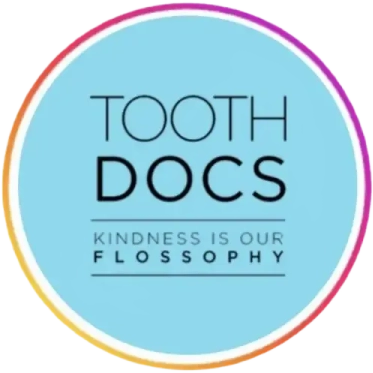Bone Grafting
Bone grafting is a surgical procedure that involves the transplantation or placement of bone tissue to repair and regenerate damaged or missing bone. It is commonly used in various medical fields, including dentistry, orthopedics, and maxillofacial surgery. .
The purpose of bone grafting is to stimulate new bone growth and provide structural support where it's needed. This can be necessary for several reasons, such as when a tooth needs to be replaced with an implant but does not have enough natural bone to support it properly. In cases of fractures or injuries, bone grafts can help promote healing by bridging gaps between broken bones.

Reasons for Bone Grafting
When it comes to oral health, bone grafting plays a crucial role in restoring and preserving the strength of our jawbones. But why would someone need a bone graft? There are several reasons that may require this procedure.
- One common reason is tooth loss. When a tooth is missing, the surrounding bone begins to deteriorate over time. This can lead to an unstable foundation for dental implants or dentures. A bone graft helps rebuild the lost bone and provides a solid base for further dental work.
- Another reason for bone grafting is periodontal disease. This condition causes the gums to recede and can result in significant damage to the underlying bones supporting your teeth. By undergoing a bone graft, you can help prevent further gum recession and preserve your natural teeth.
- Sometimes, trauma or injury can cause severe damage to the jawbone. In such cases, a bone graft becomes necessary to restore its structure and function.
- Additionally, certain medical conditions like osteoporosis or advanced gum disease can weaken the jawbone over time, making it more susceptible to fractures or other complications

Types of Bone Grafts
When it comes to bone grafting, there are different types of grafts that can be used depending on the specific needs and goals of each patient. Let's take a closer look at some common types of bone grafts:
- Autograft: This type of bone graft involves taking bone from one area of the patient's body, such as the hip or chin, and transplanting it to another area that requires additional support or volume. Autografts are considered the gold standard in bone grafting due to their high success rate and compatibility with the patient's own tissues.
- Allograft: In an allograft procedure, donor bone from a cadaver is used instead of harvesting the patient's own bone. The donated bone is carefully processed and sterilized before being transplanted into the recipient site. Allografts can be a great option for patients who don't have enough healthy donor sites or prefer not to undergo additional surgery for autograft harvest.
- Xenograft: Xenograft involves using bone material derived from animals, typically cows or pigs, which has been specially treated and sterilized for safe use in humans. While xenografts may not integrate as well with surrounding tissues compared to autografts or allografts, they can still provide structural support until new bone formation occurs.
- Synthetic Graft: Synthetic materials like ceramics, calcium phosphate compounds, or biocompatible polymers can also be used as alternatives to natural tissue grafts. These synthetic options offer advantages such as easy availability and elimination of donor site morbidity but may require longer healing times compared to other types.
Remember that determining which type of graft is best suited for your specific situation will ultimately depend on factors such as the size and location of the defect and overall health.

Bone Grafting Procedure
Once the decision has been made to proceed with a bone grafting procedure, there are several steps involved. First, the patient will undergo a thorough examination and consultation with their oral surgeon or periodontist to determine the best approach for their specific needs.
Before the procedure begins, anesthesia will be administered to ensure that the patient remains comfortable throughout. The surgeon will then make an incision in the gum tissue to expose the area where the bone graft is needed.
Next, a small section of bone is harvested from another part of the body or obtained from a donor source. This bone material is carefully shaped and placed into the site where additional support or regeneration is required.
The surgeon will then close up any incisions using sutures and provide post-operative care instructions for optimal healing. Pain medication may be prescribed as necessary to manage any discomfort following surgery.
In some cases, it may be necessary for multiple procedures or follow-up visits to achieve desired results. It's important for patients to closely follow all post-operative instructions and attend scheduled appointments for proper monitoring and care.
Each bone grafting procedure is unique based on individual circumstances and goals. By working closely with their dental professional, patients can regain stability and functionality in their mouth through this innovative technique.

Conclusion
Bone grafting is a crucial procedure in the field of dentistry that helps restore bone structure and promote healthy oral health. Whether you require a dental implant or need to repair damaged bones, bone grafting can provide the necessary support for successful treatment outcomes
So, if you find yourself facing the possibility of needing a bone graft, don't be discouraged! Seek out expert advice from our trusted dental professional, who will guide you through every step of this transformative journey towards optimal oral health.
To learn more about our dental services, visit us at 630 5th Avenue Suite 1815, New York, New York 10111 or call our office at (212) 969-9490.
Locations
630 5th Avenue Suite 1815, New York, New York 10111
Phone: (212) 969-9490
Email: info.nyc@toothdocsdental.com
- MON - FRI9:00 am - 5:00 pm
- SAT9:00 am - 4:00 pm
- SUNClosed
1044 Northern Blvd., Suite 106, Roslyn, New York 11576
Phone: (516) 625-0088
Email: info.roslyn@toothdocsdental.com
- MON9:00 am - 6:00 pm
- TUE9:00 am - 5:00 pm
- WED9:00 am - 6:00 pm
- THU - FRI9:00 am - 5:00 pm
- SAT - SUNClosed








